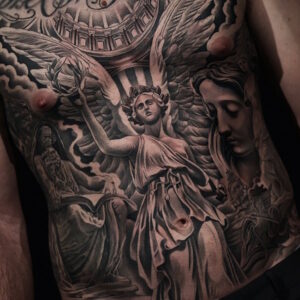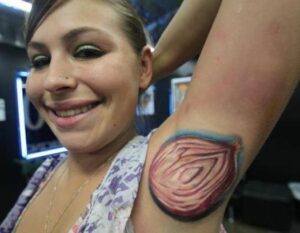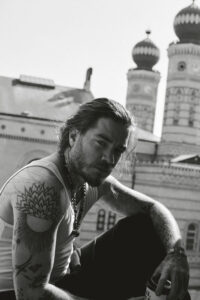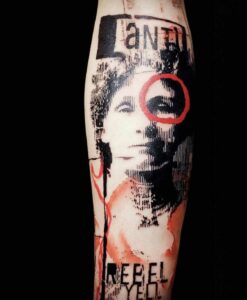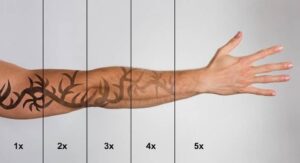Only a few cultural groups traditionally utilized facial tribal tattoos in ancient times. They used it to signify different qualities, as well as social status.
Today facial tattoos are still considered extreme, but they come a long way since the ancient times. A few cultural groups utilized tattoos on the face as a sign of social rank, marital status or genealogy.
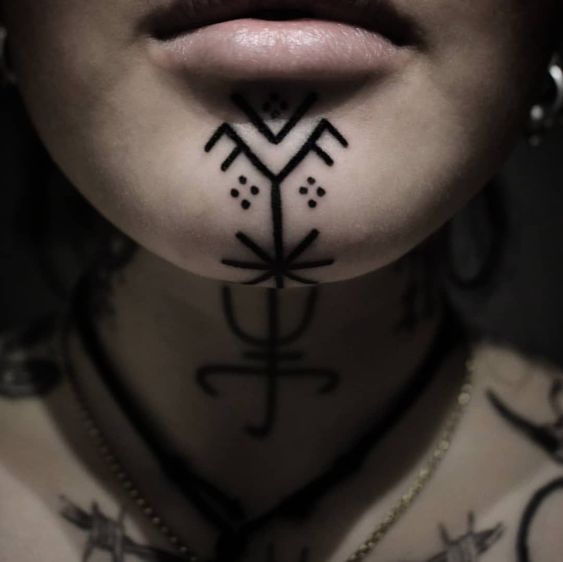
The modern word for this practice is “tattoo” (or “tattow” in the 18th century). It derives from the Polynesian/Samoan word “tatau“, meaning “to write“. It shows the simple act of body modification. A chosen design is made by inserting ink or dye into the skin in order to change its’ pigment (colour). However, tattooing as an art and practice is way older.
Tattooing dates back to the Neolithic era. The procedure of altering the appearance of human skin with a number of different methods was practiced by a several ancient civilizations.
Ancient tattoo artists used various methods to create the desired designs. These practices are ranging from simple scarification and ink (pigment) rubbing to the more precise injection of ink into the epidermis of the skin via different tools. Despite tattoos being a thing in the past, facial scarification was usually reserved for only a small portion of tribes and cultures.
Here are some of the most recognizable and significant examples.


Tā moko – Facial Tattoos of the Ancient Maori
Ancient Maori tribes used individualized facial tattooing to signify their heritage and pride. These tattoos – called “Tā moko” – are among the most famous and recognizable facial designs in the World. Maori men would typically tattoo their entire faces in intricate, curving designs. They used “koru“, or “spirals“, for the most part.
Women of the Maori tribe also used facial tattooing, but usually limited to their chins. Traditional Maori tattoos take a lot of time and patience to be made and received. Ancient artists would make several incisions into the skin and then apply a special pigment to the open cuts.
“Tā moko” tattoos indicated a higher social status in old times. In addition to signifying the rank, skills and ancestry of the wearer, these designs showed that the person endured a long and painful process to get the art done.
Maori artisans also used to draw and engrave “moko” patterns on traditional wooden statues.
Rites of Passage – Tattoos of the Southwestern Indigenous Tribes
Young women from Luiseño and Diegueño Southwestern indigenous tribes received or rather endured tattoos as a rite of passage. Tattooing took place during a sacred ceremony to introduce them into spiritual and physical womanhood.
During the first day this ritual called “Roasting”, teenage girls should “cleanse”. They are restricted in their movement, food and social contacts. The rest of the tribe would join with celebrations and songs. An elderly woman would draw individual tattoo design for each girl. These designs are applied with a cactus spine and special charcoal pigment.
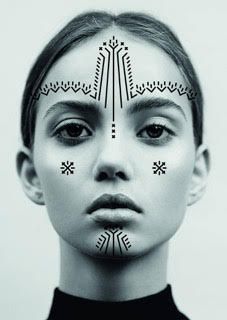
The Secret Society – Nomlaki Facial Tattoos
The Nomlaki tribes lived in the Northern California region. Tattooists in the tribe belong to a secret society called the Huta. The exclusively male group allowed younger men to join, but membership was extremely strict. Anyone who let information exclusive to the brotherhood leak, risked his life.
Despite the exclusive nature of the Huta society, artists would apply tattoos to male and female tribe members. Both genders would receive therapeutic and status-based tattoos at various stages in life. Girls received their first tattoos during their puberty. The Nomlaki used a flint knife to make deep cuts – known as “topa” or “dopna“. The tattoos usually consisted of chevrons, radial and curved lines.
Marks of Beauty – Facial Tattoos of the Inuit
In Ancient times tattoos weren’t reserved for men only. The Inuit women received larger and more complex facial tattoos than men. Both Inuit men and women used facial skin alteration to augment their beauty, but their tattoos also have a strong spiritual meaning.
Tattoos were applied by the elderly Inuit women. The procedure was rather simple, yet effective. The artist applied the pattern freehand, using special needles to penetrate the skin and then rubbing over with an oil-based soot dye. The resulting designs tattoos were usually pale-blue colour when healed. Some Inuit artists also used yellow pigment.
Generally Inuit women bore a large V-shaped tattoo pattern on the forehead to the nose. An oval shape on the cheeks and parallel lines on the cheek from the lower lip toward the jawline.
Both men and women would tattoo stick figure like human forms along the foreheads. These figures symbolized their ancestors.






